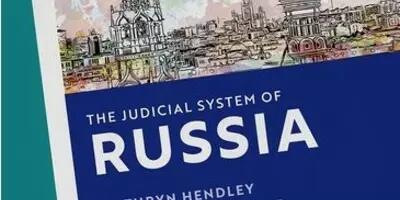Mark Kramer on 30 years since the Velvet Revolution
Last month, the Centre for European, Russian, and Eurasian Studies had the privilege of hosting Prof. Mark Kramer for a talk on the state of the Czech Republic and Central-Eastern Europe thirty years following the Velvet Revolution in 1989. Prof. Kramer is the Director of Cold War Studies at Harvard University and a senior fellow at the university’s Davis Center for Russian and Eurasian Studies. He specializes in international and comparative politics as well as the Cold War era and regime change in Eastern Europe. He has been conducting research in the region since 1990 and has affiliations with many local organizations, such as the Institute for the Study of Totalitarian Regimes in Prague.
Prof. Kramer’s talk began with a brief historical background of the Communist era in Czechoslovakia. This country is known for the Prague Spring movement of early 1968, when the Communist leadership under Alexander Dubček attempted to significantly reform the system without straying from its basic ideological framework. This plan was met with resistance and culminated in the Soviet-led Warsaw Pact invasion of the country in August 1968. The few months after this invasion were the last moments that allowed some limited leeway for reform until the regime change in 1989, where Dr. Kramer began the main element of his story. Following the Velvet Revolution, he argued, the citizens of Czechoslovakia developed an uncontrollable giddiness about controlling their own affairs after two decades of a hardline regime. Of course, the momentum forward soon led to the split of the country, essentially conducted from above by the political leadership without explicit public support. Dr. Kramer argued, however, that, in hindsight, the split has been beneficial for both countries, which maintain close and positive relations with each other to this day.
In the 1990s, the two countries’ paths diverged for some time. The Czech Republic followed a democratic course and transitioned fairly well economically, focusing on integration with the West and joining NATO in 1999. The Slovak leadership, by contrast, experimented with authoritarian tendencies and struggled to transition its country’s old, heavy industries into the new economic reality. By the new millennium, however, both states were firmly past their non-democratic phases, and they joined the European Union in 2004. These steps fully solidified the countries’ integration into Western institutions.
The economic crisis in 2008 marked another turning point in the Czech Republic’s integration into the West. Until then, Czechs were mostly confident that the Western economic and political models were the right ones to emulate, but the financial crisis shook that confidence, particularly on the economic side. Although the memories of the recession are now receding, some residual unease remains evident in opinion polls, and neighbouring countries have begun to revolt against perceived Western dominance by developing new political models as well. These shifts are most evident in Hungary and Poland, but we can also see them in the creation in 2011 of the ANO (“Yes”) political party, led by Andrej Babiš, and Miloš Zeman’s leadership as president since 2013. Both of these leaders employ populist tactics and the former, a businessman with ties to the Communist-era secret police, has been embroiled in corruption scandals. Prof. Kramer speculates that Babiš’s ability to rise in the political ranks is a result of not having pursued a harsher lustration policy in the 1990s.
Despite these conditions, the Czech Republic has so far mustered enough opposition forces to prevent a slide toward illiberalism as has been experienced in Poland and Hungary. For the most part, it has integrated successfully into the West, and current opinion polls show widespread support among young people for democracy and the European Union. The past few years have also seen the development of a widespread protest movement. Prof. Kramer’s expectation is that, while some of the developments of the past decade are troublesome, the normative gaps between the Czech Republic and its western neighbours will continue to diminish, and the future still looks optimistic.
by Daniela Bouvier-Valenta, CERES MA candidate
Prof. Kramer’s lecture was part of a six part series devoted to a new CERES research initiative on the Czech Republic and Slovakia entitled, “Making and Remaking Central Europe: The Czech and Slovak Contribution.” The series is made possible entirely through the generous support of the Czech-Canadian community.

